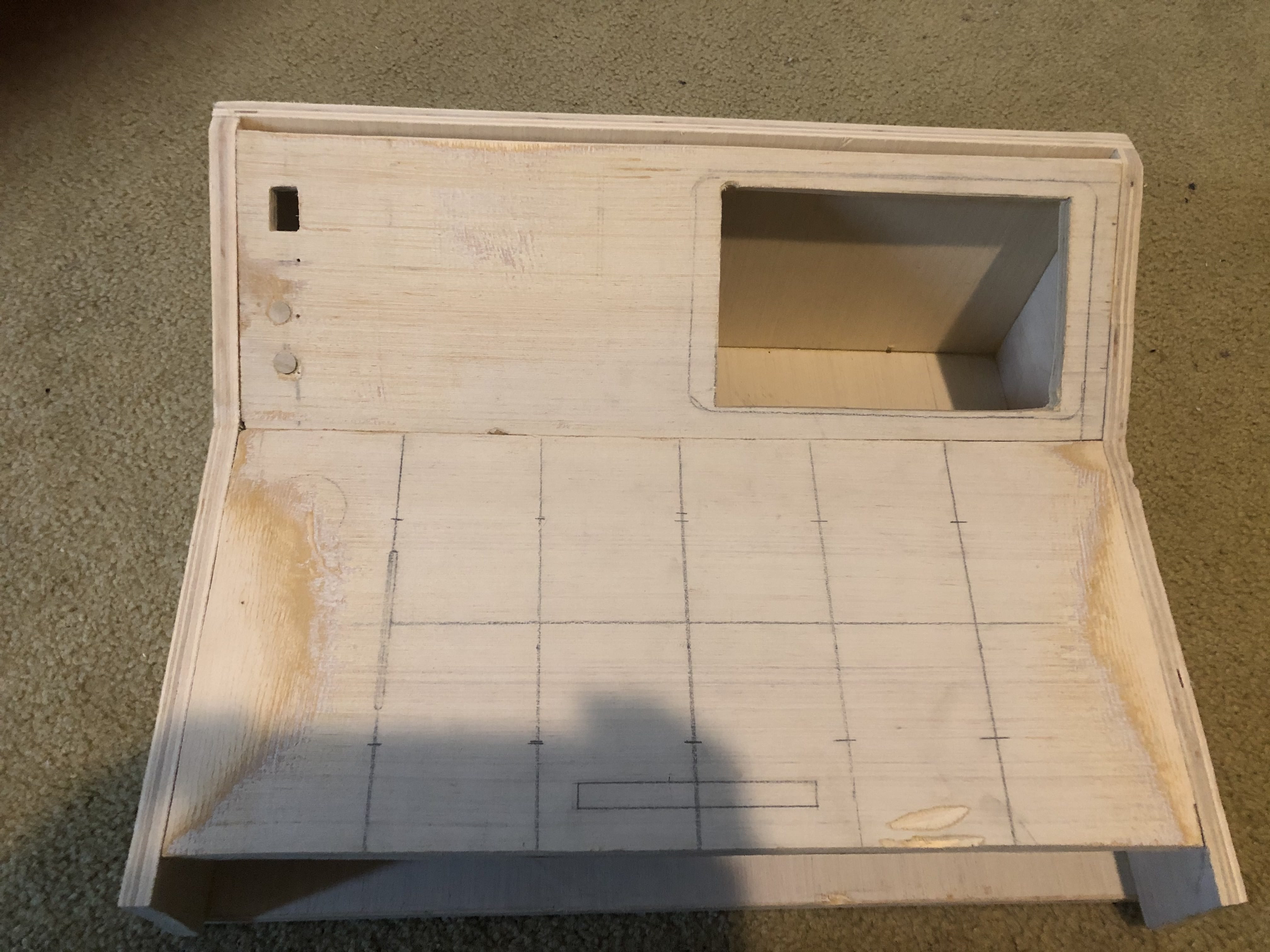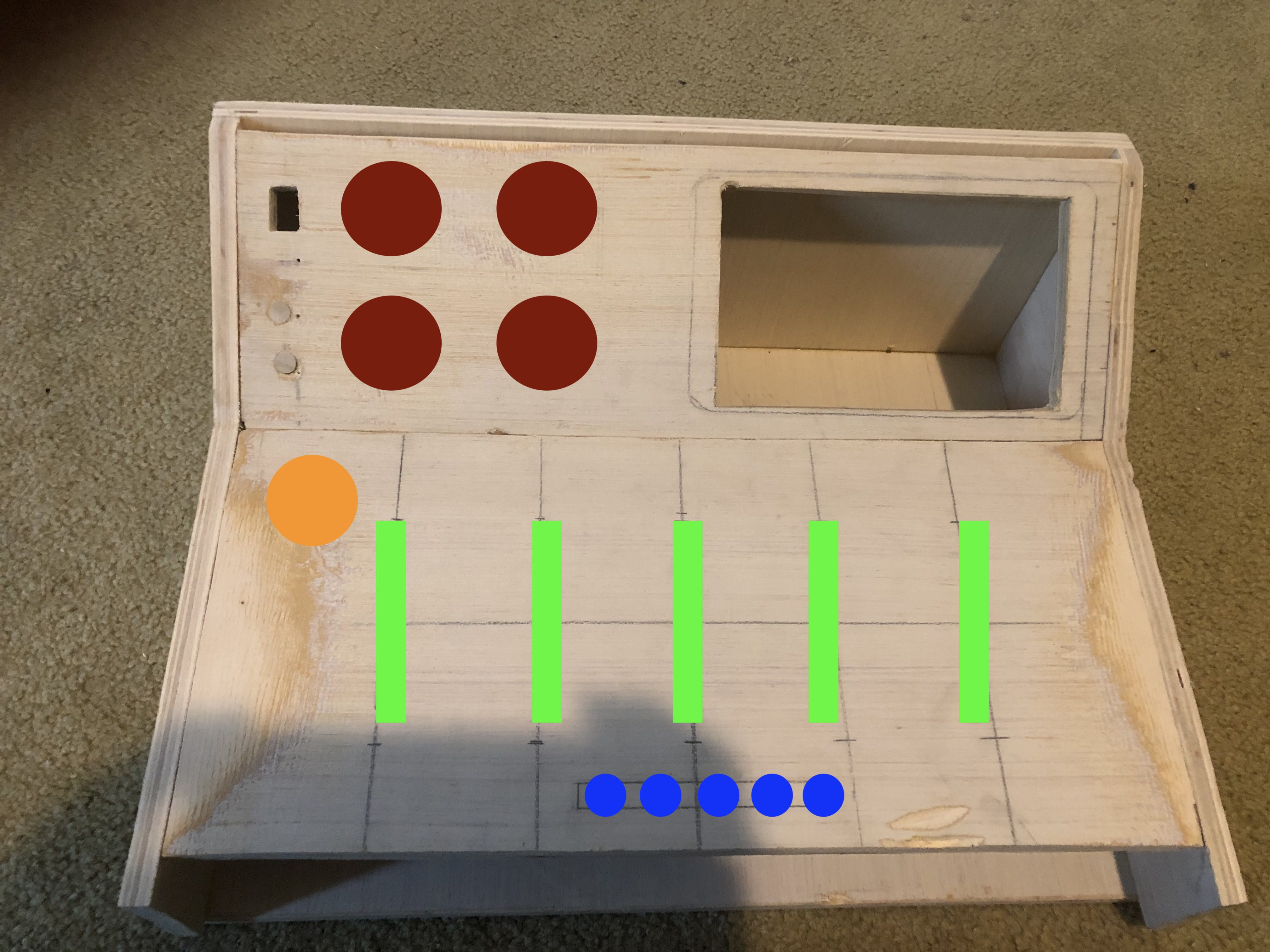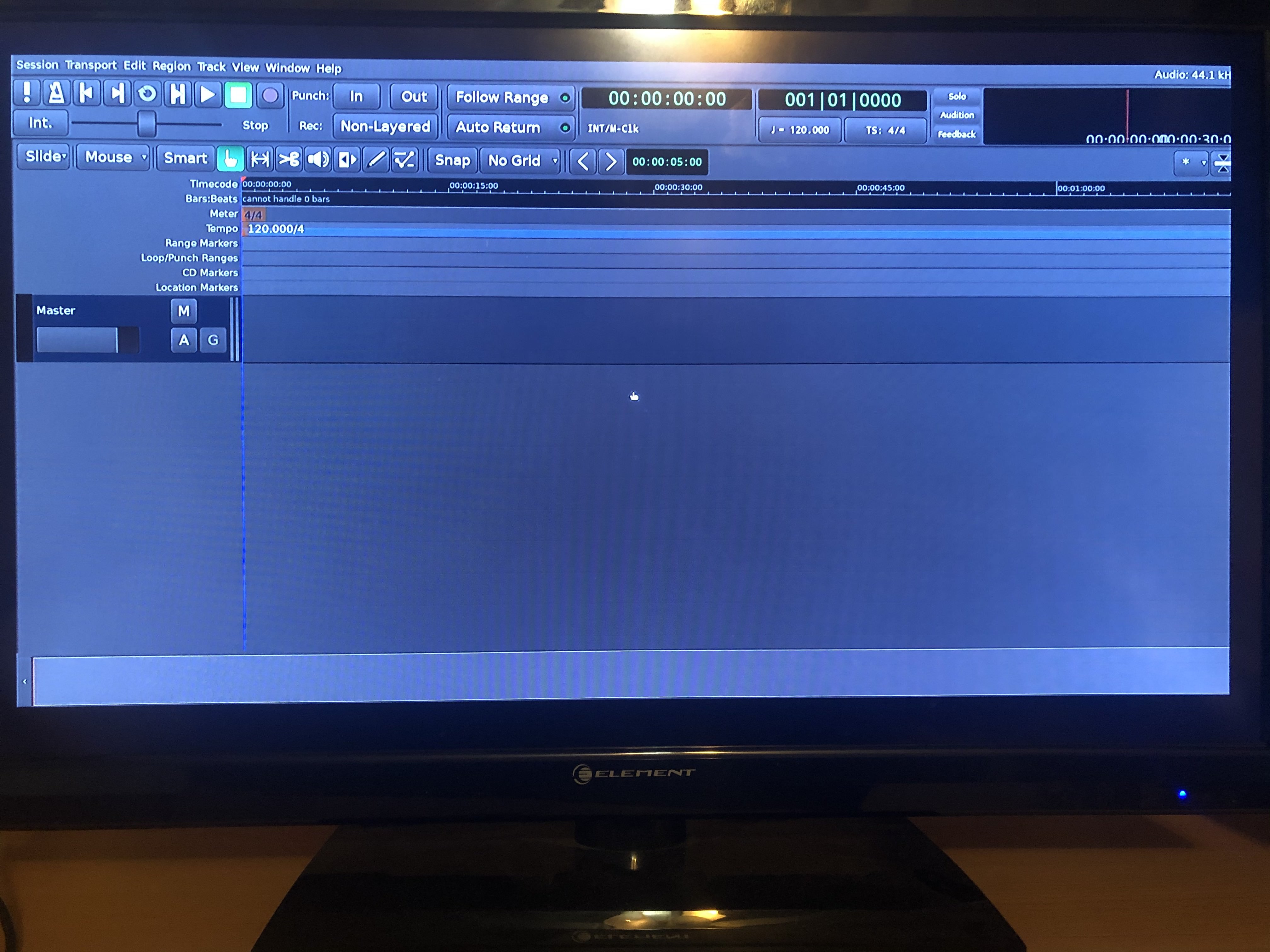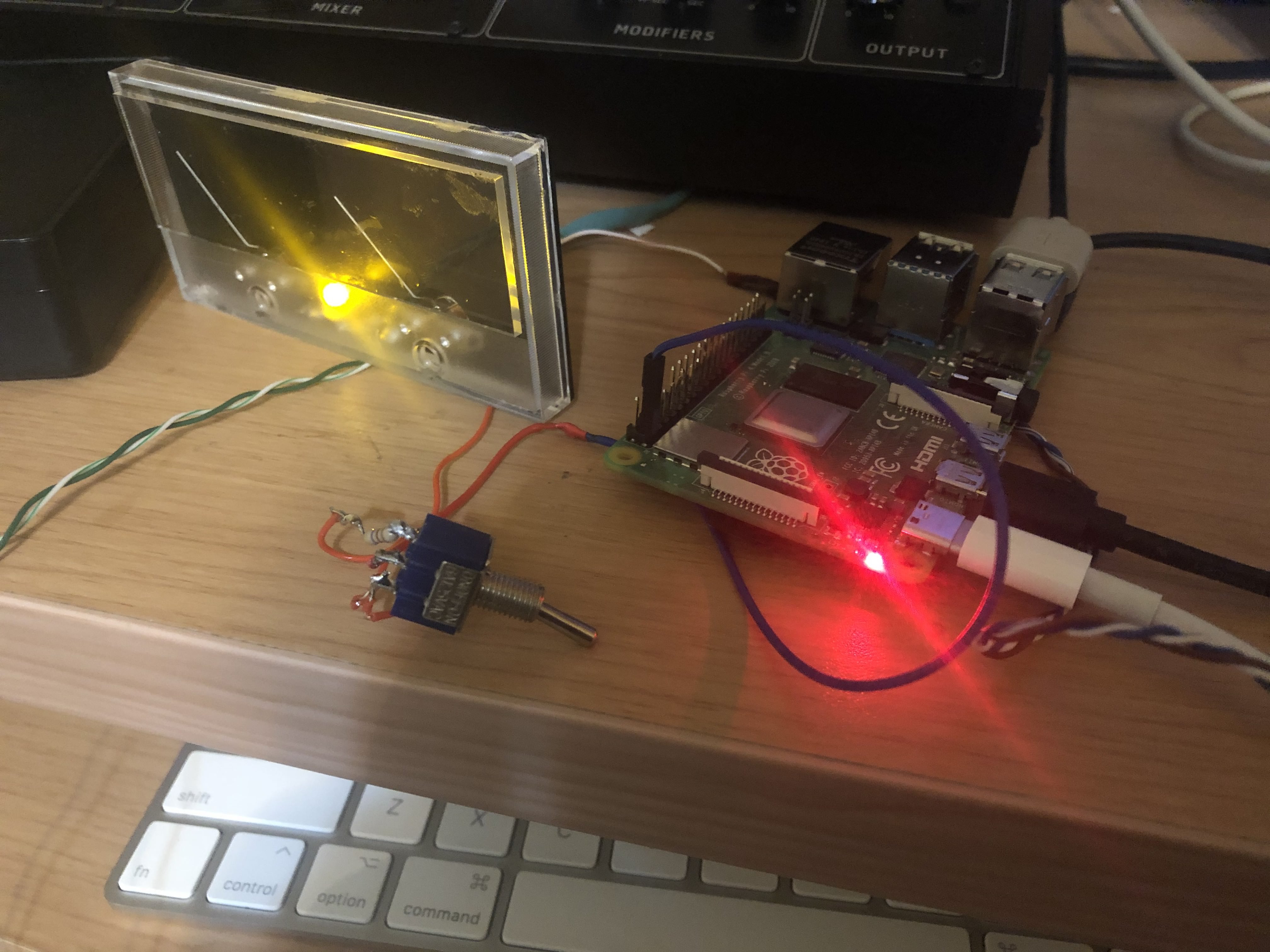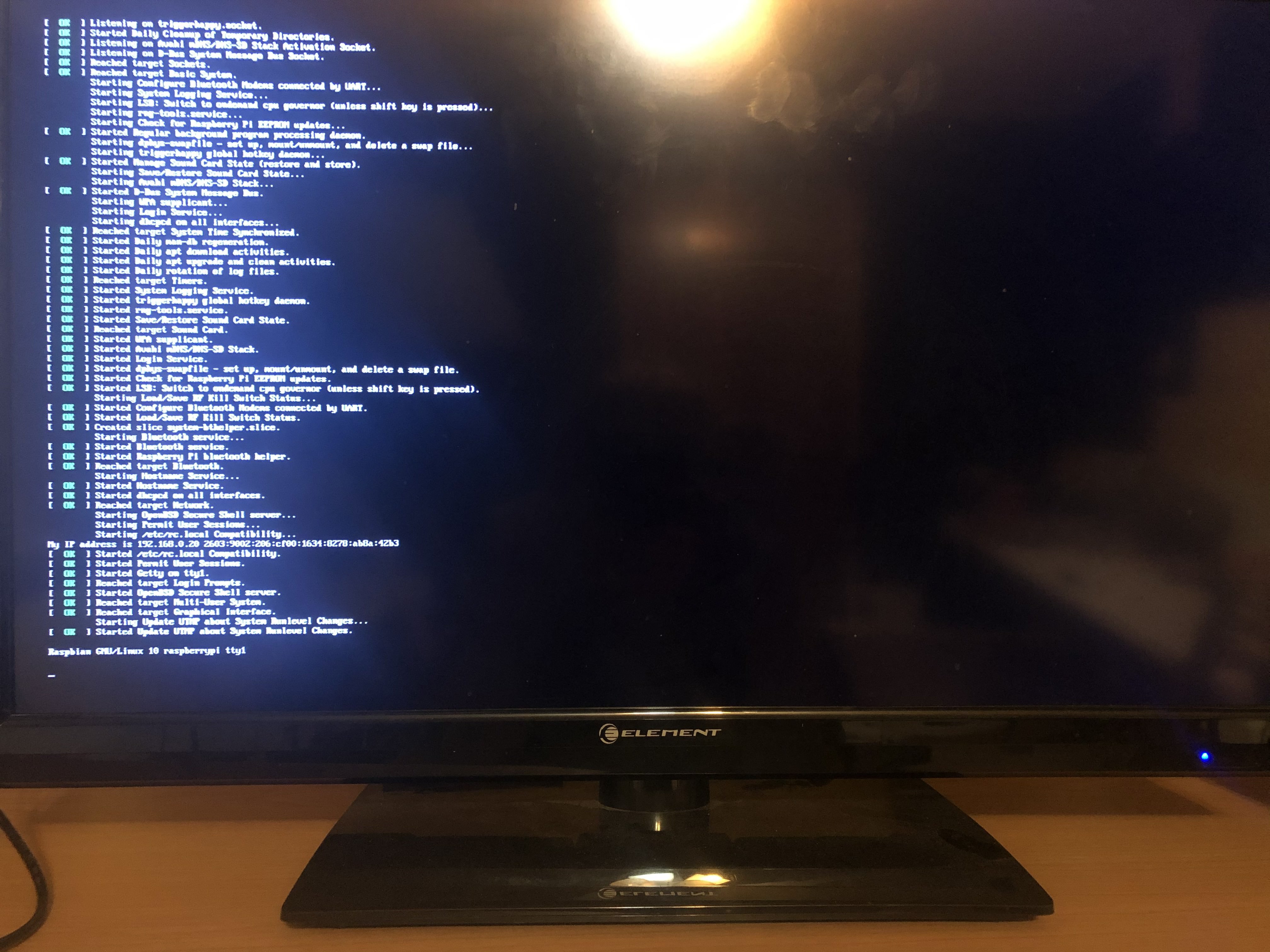-
October 12th 2020
10/12/2020 at 17:58 • 0 commentsGOOD LORD IT'S BEEN AWHILE!
Okay, so I finally got the mixer face plate back, aaaaaaand... I just can't use it. It was so badly warped, and after I measured some stuff it turns out I really couldn't use it anyway. I really tried to use it, but I just can't. BUT FEAR NOT, while I may have just broken the only caveat of this whole build, I will still keep on the build.
New plan...
So generally I'm a lot better at working with wood versus metal. (I really don't know what I was thinking trying to do this out of metal... Oh well). I've decided to make the case out of wood (1/2 inch plywood (the good plywood though)), and it turned out pretty well. I would have gotten some time lapse footage of it but honestly I just really didn't want to. I do have a picture of the semi-finished product. There is a little bit more I have to do, but this is about what I've got.
![]()
The Design
So the design is based on a Rupert Neve mixer. Marked in red there is supposed to be four round VU meters (I really wanted to keep the meters), in green, there are faders, in blue there are transport controls, and in orange there is a jog wheel to move the editor.
![]()
The small rectangular hole is for a power switch, and the big one is for the monitor.
In conclusion...
So I totally broke my one rule, but I'm really okay with it as long as it gets done. I really should have done the wood chassis first, but I didn't, oh well you learn from your mistakes. I'll be posting a bit more frequently, but I can't guarantee that there won't be another gap in posting if I'm waiting for something.
-
September 27th, 2020
09/27/2020 at 17:23 • 0 commentsJust a quick little update for today, before my LCD comes in.
I decided to install a window manager for the Raspberry Pi, due to some scaling issues with Ardour. I'll more than likely be staying on Raspberry Pi OS lite as well.
-
September 26, 2020
09/27/2020 at 01:09 • 0 commentsI received my new Raspberry Pi 4 B, and loaded up Raspberry Pi OS lite on it. I'm debating whether to just stay on this or try to do my own custom system again. Anyway, the main reason I got the 4, is so I could use Ardour on it. I prefer Ardour to LMMS any day. I successfully got Ardour to run on it with no problems (go figure), and it's running as the only application on an Xorg environment. Meaning no window managers, etc. I've sent off the casing to have some of the holes filled on it via welding, and I should be getting it back sometime next week. Here are some basic pictures of what I've gotten so far.
![]()
![]()
![]()
I've just ordered the Raspberry Pi official 7" LCD screen, which will be in some time around October 6-7.
-
Tuesday, September 15th, 2020
09/15/2020 at 18:31 • 0 commentsI've was debating on how to accomplish this; I wanted to add serial capabilities to the PortaStudio, and for a while I considered just adding a DB9 COM port to it, but instead I actually "borrowed" this idea from a Casio graphing calculator that I've had for a while. On the calculator there is a stereo 2.5mm "headphone" jack that actually serves as a serial port. It utilizes TTL UART which just so happens to be what the Pi uses. This is the wiring diagram that I followed:
Tip = TX
Ring = RX
Sleeve = GND
I've gone ahead and purchased a Raspberry Pi 4 (2GB) because of the limitations of the Pi Zero. (Please see the "Details" section for the synopsis)
